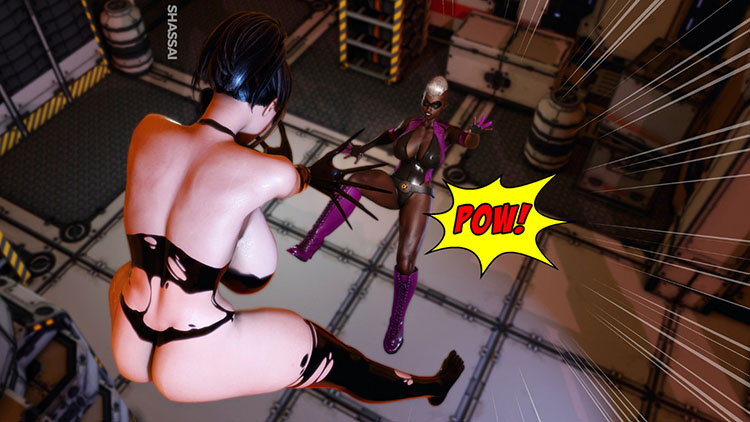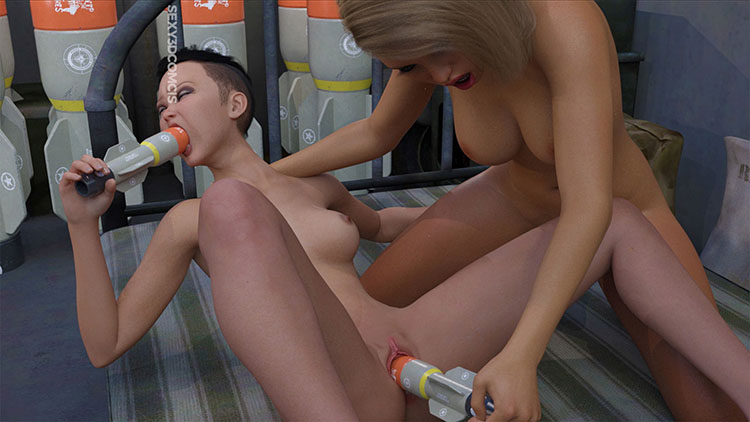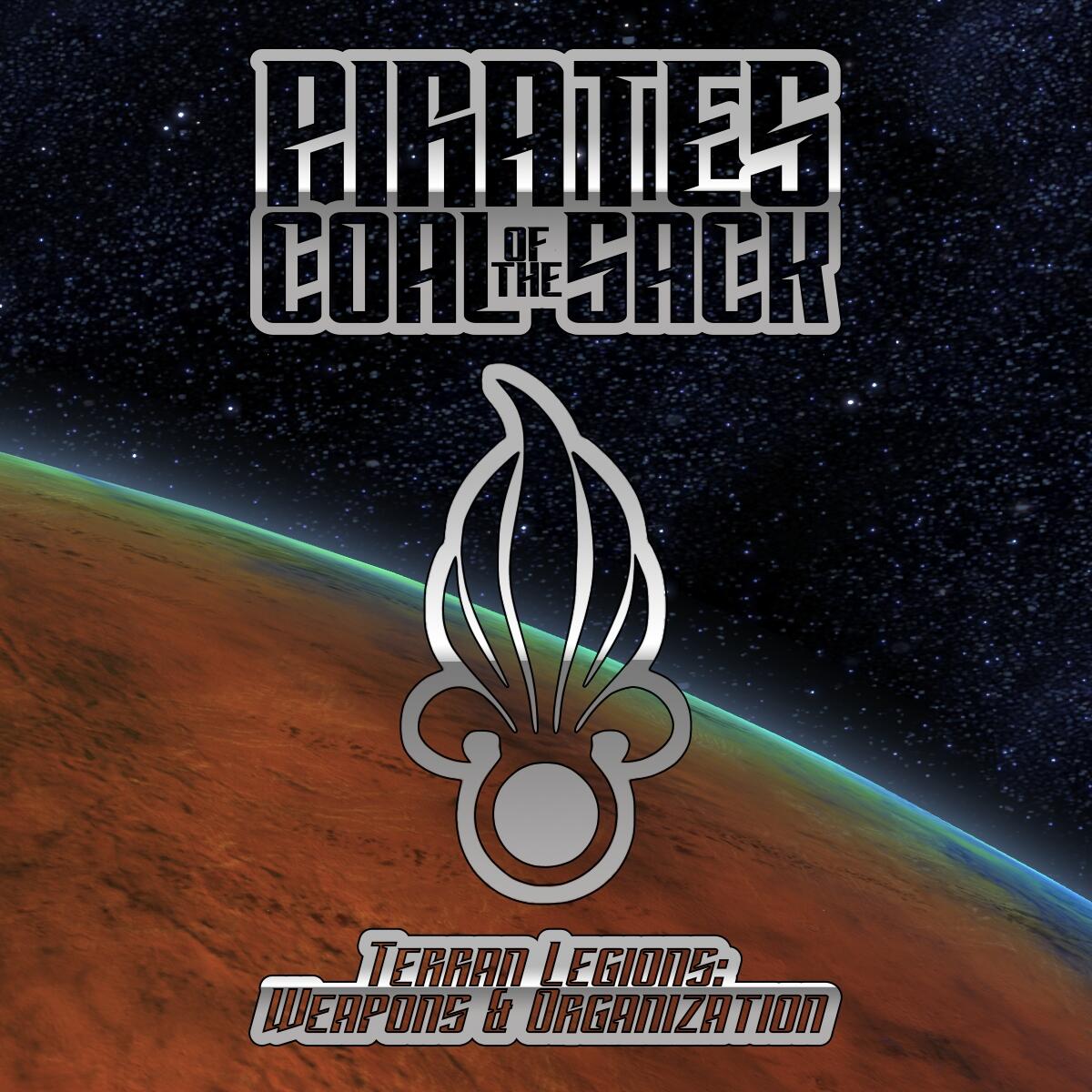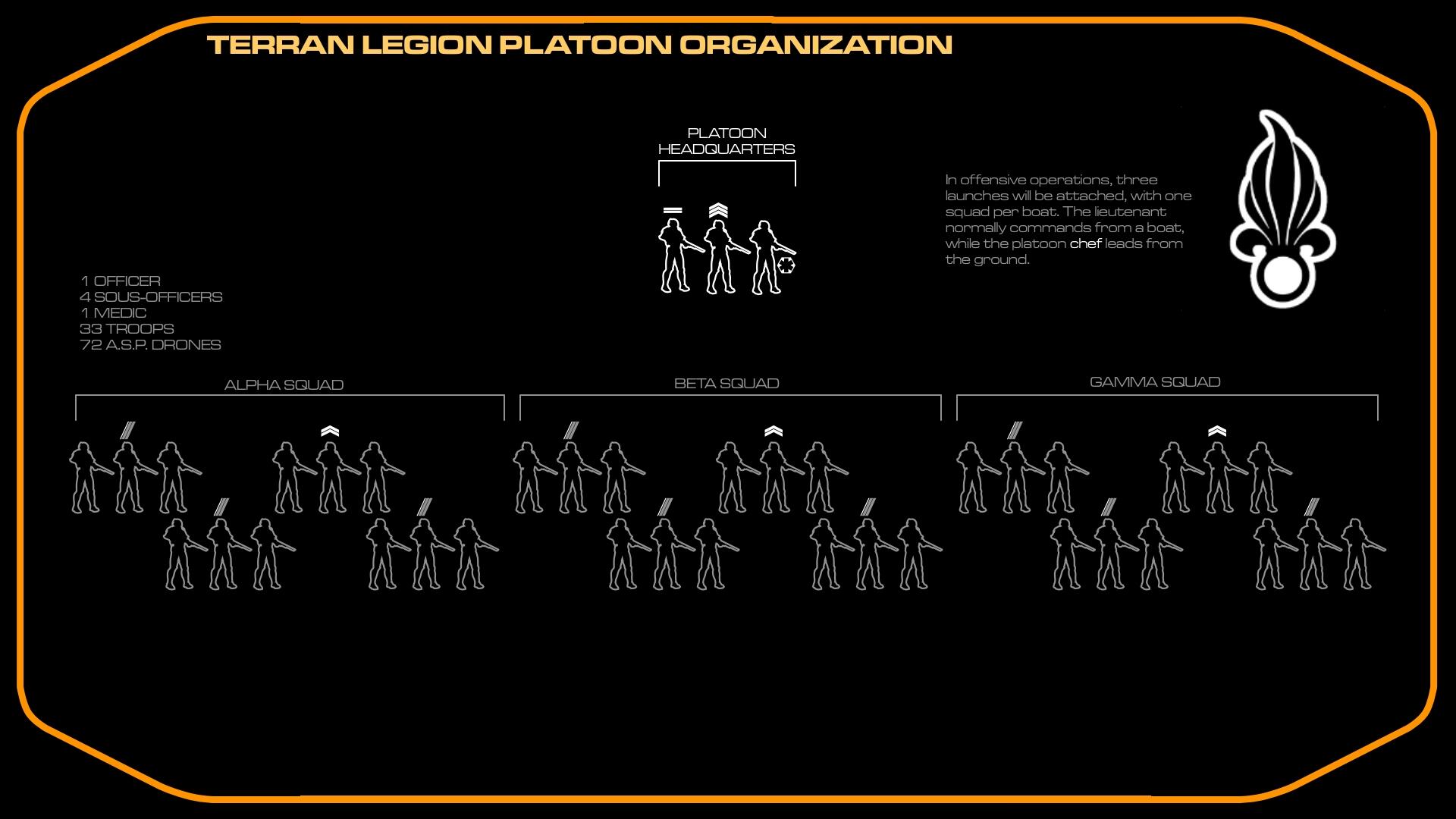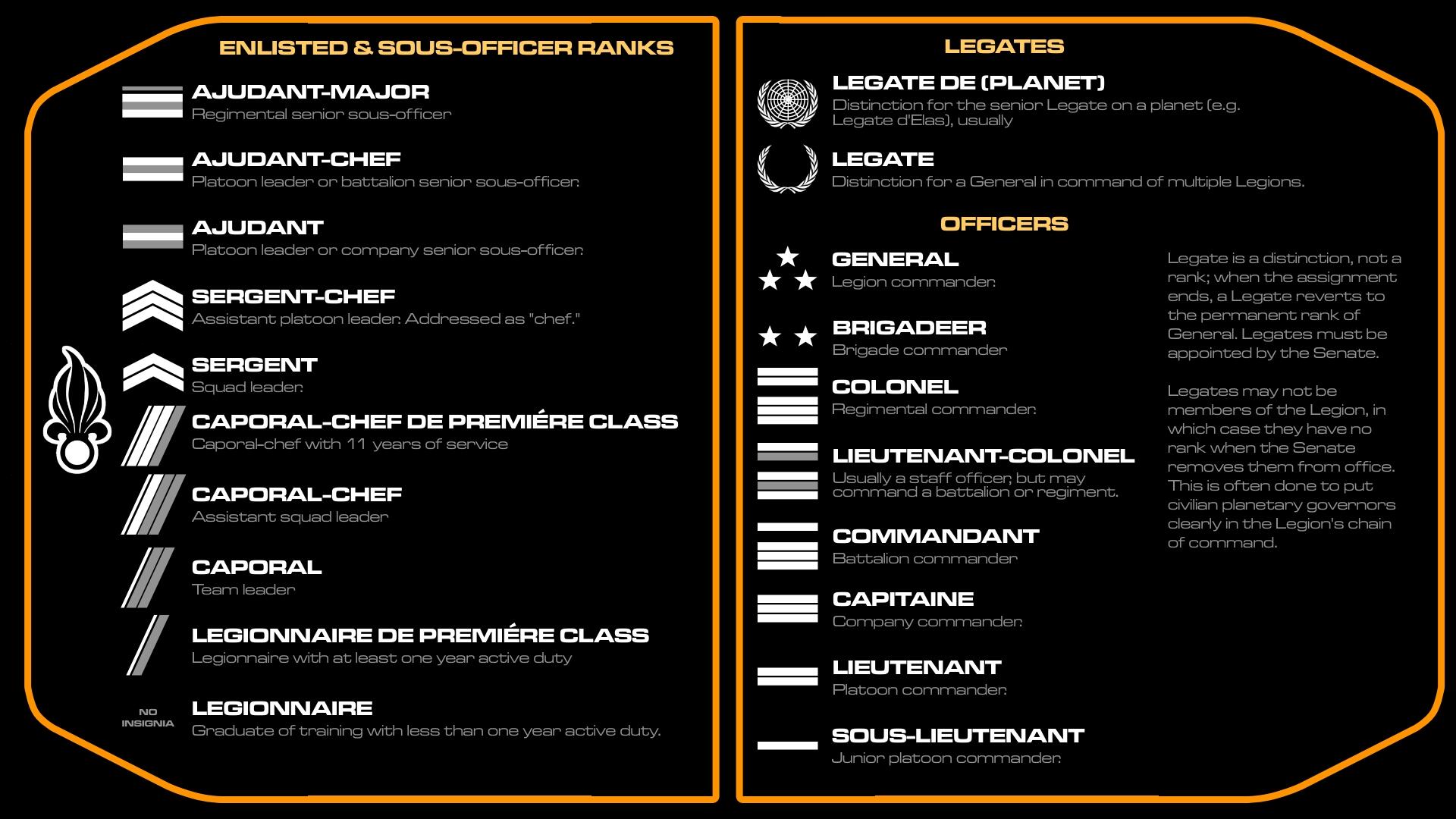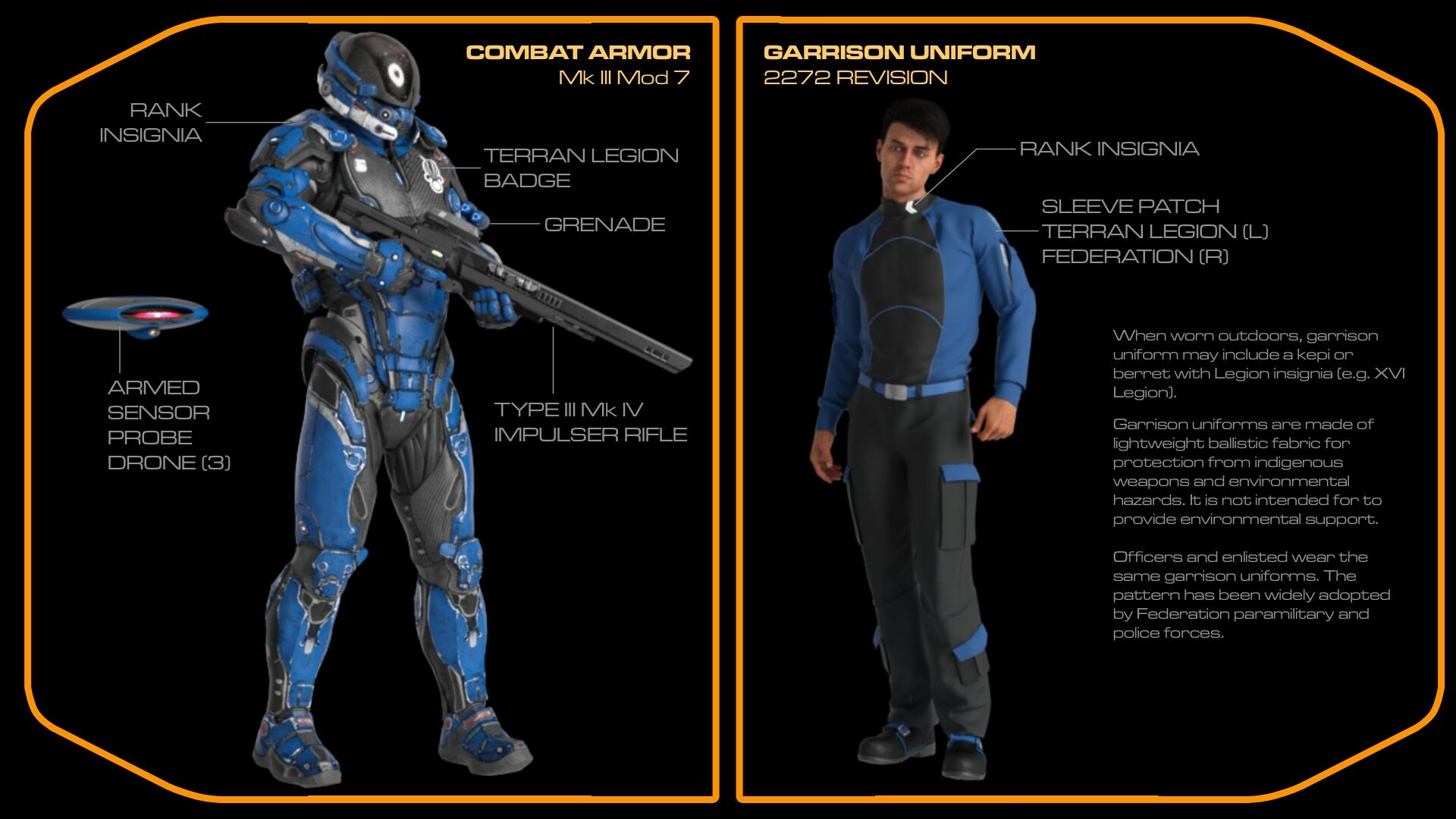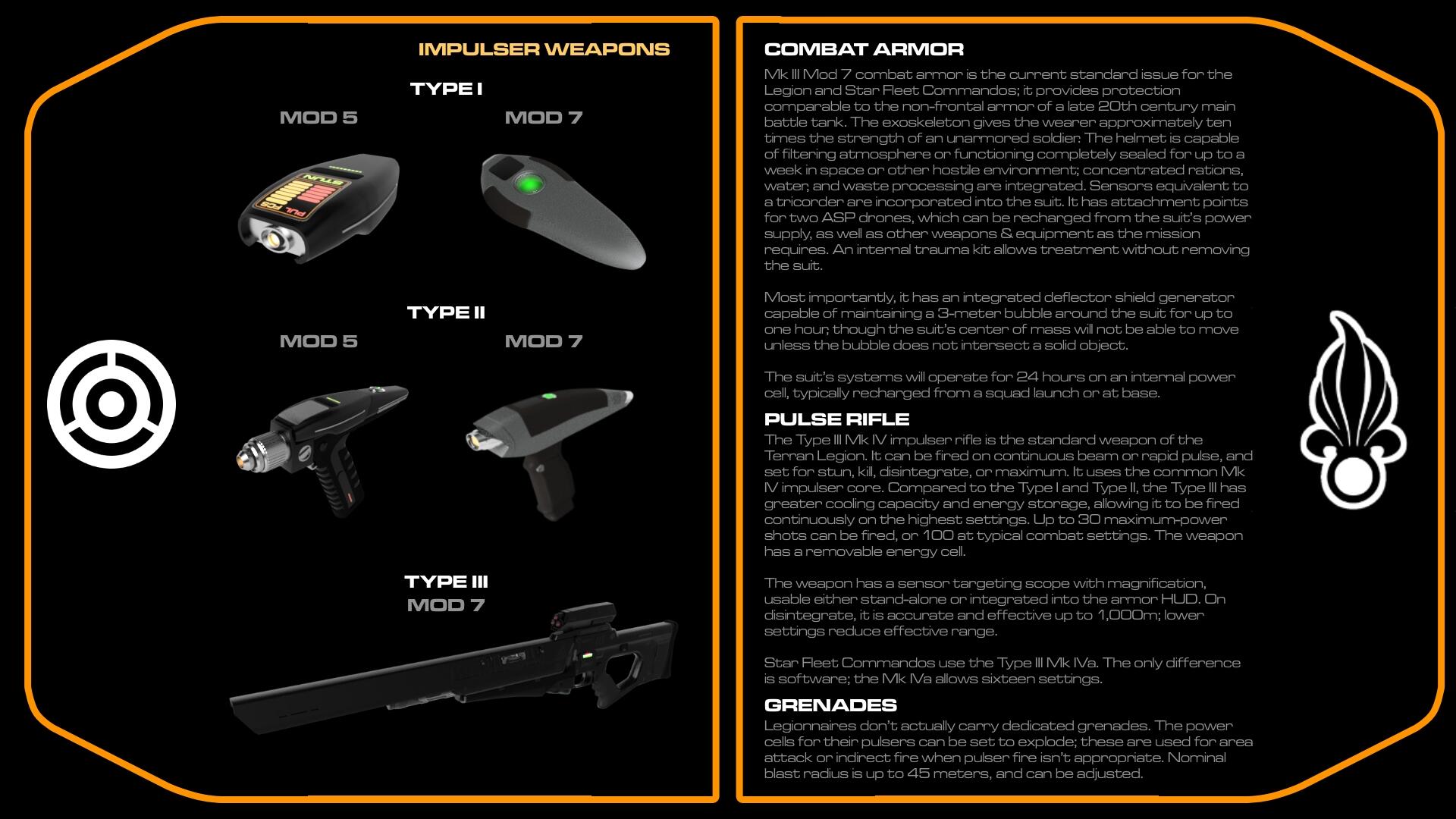Terran Legions: Weapons & Organization
Jul 15, 2023
Star Fleet Commandos and the Terran Legion are similarly equipped and, up to the company level, use similar doctrine.
A Legion infantry platoon consists of three squads of Legionnaires plus a leadership team of officer, platoon sergeant, and medic. Each squad has four teams of three Legionnaires each; one team leader is the squad leader.
Individual Legionnaires wear power armor not for the protection the armor provides but because it allows them to carry the load of a personal deflector shield and power supply. When active the shield provides protection from impulser weapons; no material can do that. This lets Legionnaires behave a lot like an armored vehicle, shrugging off infantry attacks through superior armor. The shield has two drawbacks: It has to be down for the soldier to move (due to interference with the ground), and, with a minimum diameter of three meters, the spherical shield isn’t very practical at close quarters. Sustained pulser small arms fire can bring the shield down, but it will regenerate from internal power given time.
Each Legionnaire’s equipment also includes two Armed Sensor Probe (ASP) drones; deployed, each team’s six drones are grouped into two flights of three, with the two troopers acting as drone leaders while the team leader leads all of them. This effectively gives the Legionnaires an “infantry” screen. The ASPs are armed with pulser weapons and are faster and more maneuverable than the soldiers–and more expendable. While Federation law doesn’t allow fully autonomous weapons (most galactic powers view that as the equivalent of a weapon of mass destruction), the soldier in the loop doesn’t have to make every firing decision, just approve target identification and give a weapons release. Once he says “kill it,” the drone’s AI will do the rest. With the ASPs, a Legion platoon has as many eyeballs and guns as an all-organic company.
Pulser Weapons
Understanding ground combat doctrine starts with understanding the extraordinary power of a pulser compared to earlier weapons. The actual impulser beam generator in a type I, II, and III pulser weapon is the same; the progressively larger weapons improve targeting, focusing, cooling, and energy storage, but it’s the same beam. It’s as though everything from a holdout through a battle rifle fired the same round.
In the case of a pulser, though, that bullet is capable of explosively vaporizing 125 tons of matter with a single shot. A pulser on higher settings will cause a contiguous mass to break apart at the subatomic level and fly apart in a shower of particle radiation; if the object is too massive, the “rebound” energy will cause a sizable explosion. Every shot from a Legionnaire’s or ASP’s weapon has the explosive potential of a modern Mk 82 general purpose bomb. And these weapons are fully automatic; a single Legionnaire is a one man air strike.
With that much destructive potential in the infantry weapons, adding more firepower usually has the net result of destroying totally whatever’s being fought over. The Legions are meant to be a more surgical weapon.
Pulsers are generally not used at full power for this reason. Star Fleet personal pulsers have sixteen power settings, from light stun through an even more powerful explosive effect. Legion pulser rifles have stun (2), kill (5), disintegrate (8), and maximum (11); ASPs have only stun, kill, and disintegrate. Stun and kill are used on unarmored enemies.
The Legion Mission
The Terran Legions’ mission is to take and maintain control of planetary environments. The most common types of mission are planetary invasion and counter-insurgency; it’s not practical to move a large enough force from Earth to perform occupation of an inhabited world. Occupation forces are usually under local control, backed by Legionnaires if policing turns into actual warfare.
Unit Organization
By analogy to the 21st century US Army, every Terran Legion infantryman is an entire mechanized fire team by himself. His armor is capable of flight, and its shields can render him impervious to small arms fire when exposed (at least for a short period of time). He’s in a sealed environment with sensors, communication, and electronic warfare capabilities. While he is himself armed with a pulser, his principal weapon is a trio of ASP drones that can deploy from his armor and use stealth, agility, and speed to engage the enemy.
In combat, each soldier will control three ASPs, the team leader (caporal) having none so he can focus on the other two members of his team. One team leader is the squad leader (sergent), for 12 soldiers and 24 drones. A platoon is three squads plus a platoon leader (lieutenant or sous-lieutenant), sergent-chef, and medic, a total of 39 soldiers and 72 ASPs.
Vehicles
Vehicles employed by planetary forces are the equivalent of Star Fleet’s boats–pressurized impulse-drive aerospace craft. They are powered by power cells.
Launch: Comparable in size to a modern medium utility helicopter, a launch carries a squad of Legionnaires in armor. It is armed with squad support pulsers (Type IV) to cover loading and unloading and provide some close air support, but the main offensive punch comes from the Legionnaires. It’s shields are heavier than a Legionnaire’s, but it is a larger target. The main purpose is operational mobility and sustainment; the launch carries a fusion reactor that can recharge the Legionnaire’s armor and weapons (and the launch itself), and carries food, water, and other consumables.
Jumpboat: The jumpboat is a larger vehicle, capable of embarking an entire platoon or company. The main feature is a leap ring system (transporter); the jumpboat’s mission is to get line of sight on a target and leap its troops into combat while itself staying out of the fray. It may have weapons and shields, but is necessarily defenseless while the using the leap system.
Gunboat: A Legion gunboat is a very different thing from a Star Fleet gunboat; don't get them confused. The same size as a launch, a Legion gunboat carries a Type V pulser cannon and additional power storage instead of passengers or cargo; it also has upgraded shields. The gunboat isn’t typically employed in mobile attack; its mission is to reduce enemy shields, allowing infantry to engage effectively.
Stats
Views
724
Favourites
4
Likes
16
Comments
0
You must be logged in to post comments. Please login or register.
Do you want to add items to list ?
>










